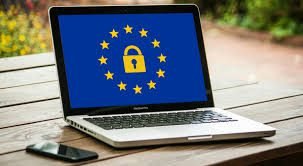Controlling access in an office environment is critical for ensuring the safety and security of employees, sensitive information, and valuable assets. Whether you’re managing a small business or a large corporate office, implementing robust access control measures can protect against unauthorized entry, theft, and other security breaches. Here’s a detailed look at what it entails and why it’s essential.
Table of Contents
1. Understanding Access Control
Access control refers to the selective restriction of access to a place or resource. In an office setting, this involves managing who can enter specific areas, when they can do so, and under what circumstances. Effective access control systems not only prevent unauthorized access but also help monitor and manage employee movements within the premises.
2. Types of Access Control Systems
Several types of access control systems can be implemented, depending on the size of the office, the level of security required, and budget constraints:
- Keycard Systems: One of the most common systems, keycards allow or deny access based on a magnetic strip or RFID chip embedded in the card. They can be programmed to allow access to specific areas at certain times and can be easily deactivated if lost or stolen.
- Biometric Systems: Clocking Systems can use unique biological characteristics like fingerprints, retinal scans, or facial recognition to grant access. Biometrics provide a high level of security because they are difficult to forge or steal.
- PIN and Password Systems: These require users to enter a PIN or password to gain entry. While easy to implement, they rely heavily on the secrecy of the code and are less secure if codes are shared or easily guessed.
- Smartphone-Based Systems: Modern systems can use smartphones as a means of access, leveraging Bluetooth, NFC, or dedicated apps. These systems can provide additional security layers, such as multi-factor authentication.
- Physical Barriers: Turnstiles, security doors, and barriers can be used in conjunction with electronic access systems to physically control entry points.
3. Implementing a Hierarchical Access System
Not all employees need access to all areas of an office. Implementing a hierarchical access system can enhance security by limiting access based on roles and responsibilities:
- Zoning: Divide the office into zones or areas with different levels of access. For example, general workspaces may have open access, while server rooms or executive offices have restricted entry.
- Role-Based Access: Assign access permissions based on job roles. For instance, IT personnel might have access to technical areas, while HR has access to personnel files.
- Time-Based Access: Control when employees can access certain areas, such as restricting access to specific floors or rooms after hours.
4. Monitoring and Audit Trails
Effective access control systems should not only restrict access but also provide detailed monitoring and audit trails:
- Log Entries: Keep records of who accessed which area and when. This can help in investigating security breaches or identifying unauthorized entry attempts.
- Real-Time Monitoring: Some systems offer real-time monitoring and alerts for suspicious activity, such as repeated failed entry attempts or unauthorized access to restricted areas.
5. Integrating with Other Security Systems
Access control should be integrated with other security measures for comprehensive protection:
- Surveillance Cameras: Pairing access control with CCTV systems allows for visual confirmation of who is entering and exiting the premises.
- Alarm Systems: Alarms can be triggered by unauthorized access attempts, further deterring potential intruders.
- Fire Safety Systems: Ensure that access control systems are integrated with fire safety measures so emergency exits can be accessed easily during a fire or other emergencies.
6. Employee Training and Policies
Access control systems are only as effective as the people using them. Proper training and clear policies are essential:
- Training: Employees should be trained on how to use access control systems correctly and understand the importance of not sharing access credentials.
- Policies: Establish clear policies regarding access levels, reporting lost credentials, and the consequences of policy violations.
Conclusion
Controlling access in your office is a fundamental aspect of maintaining security and protecting both people and assets. By implementing an appropriate access control system, monitoring access effectively, and ensuring employee compliance with security policies, you can create a safe and secure working environment. In today’s increasingly security-conscious world, robust access control measures are not just an option but a necessity for any organization.
Apart from that, if you are interested to know about RMM Tools for Remote Work then visit our Business category.
















